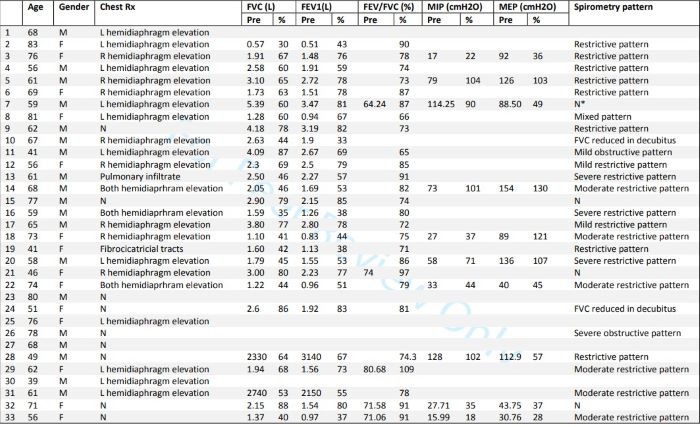Abstract
Backgroud: Neurophysiological studies, based on clinical findings, imaging tests or functional respiratory tests, are essential to confirm the diagnosis when diaphragmatic paralysis is suspected1. A cohort of 33 cases, gathered between 2009 and 2022, of diaphragmatic paralysis due to idiophatic etiologies, iatrogenic and secondary to neuromuscular diseases or others disordes is presented.
Methods: In all cases, respiratory function tests, chest X-ray and neurophysiological studies (phrenic nerve conduction studies and electromyogram of boths hemidiaphragms) were performed to confirm the diagnosis.
Results: Results obtained in the radiological studies and functional respiratory tests are presented (Table 1), showing the elevation of one or both hemidiaphragms, depending on the case, and the parameters obtained in the functional respiratory tests, which indicated a restrictive pattern of variable intensity in most cases.
Conclusions: Although diaphragmatic paralysis is a known cause of respiratory failure, it is an infrequent pathology, and it is not possible to perform complete diagnostic studies in all cases. The possibility of performing diagnostic techniques that confirm clinical findings and functional respiratory tests is necessary for the management and follow-up of these patients.
Figure 1: Chest Rx/Respiratory function tests results

1. Qureshi, A. Diaphragm paralysis. Semin. Resp.Crit.Care.Med.2009,30,315-320